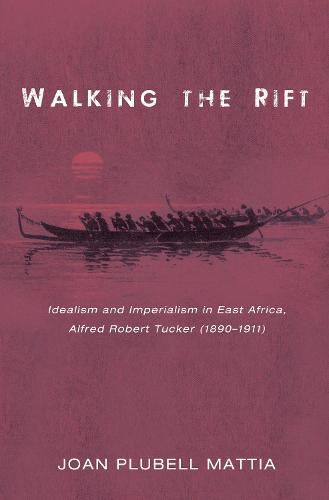Readings Newsletter
Become a Readings Member to make your shopping experience even easier.
Sign in or sign up for free!
You’re not far away from qualifying for FREE standard shipping within Australia
You’ve qualified for FREE standard shipping within Australia
The cart is loading…






This title is printed to order. This book may have been self-published. If so, we cannot guarantee the quality of the content. In the main most books will have gone through the editing process however some may not. We therefore suggest that you be aware of this before ordering this book. If in doubt check either the author or publisher’s details as we are unable to accept any returns unless they are faulty. Please contact us if you have any questions.
The Victorian encounter with Africa contains many micro-narratives that call for a questioning of an old consensus. Tentative assumptions as to the motives of early missionaries and colonial personnel often prove less than satisfactory due to stereotypes and unexplored archives. The need for new master narratives that move beyond the old paradigms of Western expansion and African victimization are being called for by scholars of the Global North and South–narratives that allow room for strong evidence of an egalitarian joint endeavor and African cultural vitality without avoiding the investment in imperialism practiced by colonial personnel. Based on extensive archival research, Walking the Rift advocates an alternative proposal–missionaries and administrators caught in the grinding of contradictory opposites. As a professional artist, Alfred Robert Tucker captured this tug-of-war on canvas, but similar dichotomies are found in his approach to marriage contracts, slavery, mission and church organizational structure, alliance with the colonial government and African partnership. Tucker is a representative figure–a prism to shine light on those involved in the British East African project. Like many in the early encounter with Africa, he was neither a consistent imperialist nor a complete egalitarian idealist, but operated in both spheres without creating a third.
$9.00 standard shipping within Australia
FREE standard shipping within Australia for orders over $100.00
Express & International shipping calculated at checkout
This title is printed to order. This book may have been self-published. If so, we cannot guarantee the quality of the content. In the main most books will have gone through the editing process however some may not. We therefore suggest that you be aware of this before ordering this book. If in doubt check either the author or publisher’s details as we are unable to accept any returns unless they are faulty. Please contact us if you have any questions.
The Victorian encounter with Africa contains many micro-narratives that call for a questioning of an old consensus. Tentative assumptions as to the motives of early missionaries and colonial personnel often prove less than satisfactory due to stereotypes and unexplored archives. The need for new master narratives that move beyond the old paradigms of Western expansion and African victimization are being called for by scholars of the Global North and South–narratives that allow room for strong evidence of an egalitarian joint endeavor and African cultural vitality without avoiding the investment in imperialism practiced by colonial personnel. Based on extensive archival research, Walking the Rift advocates an alternative proposal–missionaries and administrators caught in the grinding of contradictory opposites. As a professional artist, Alfred Robert Tucker captured this tug-of-war on canvas, but similar dichotomies are found in his approach to marriage contracts, slavery, mission and church organizational structure, alliance with the colonial government and African partnership. Tucker is a representative figure–a prism to shine light on those involved in the British East African project. Like many in the early encounter with Africa, he was neither a consistent imperialist nor a complete egalitarian idealist, but operated in both spheres without creating a third.